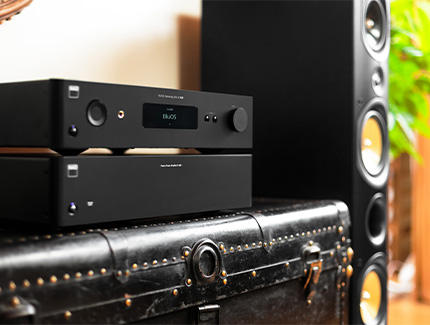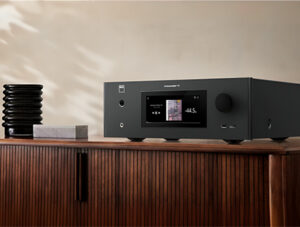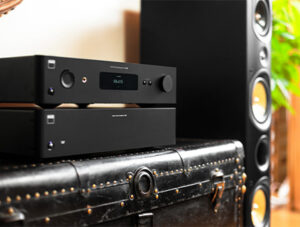The era of smart homes is here, and it’s transforming the way we interact with our living spaces. For home theater enthusiasts, integrating smart home technology can elevate the entertainment experience, offering seamless control, immersive audio and visuals, and added convenience. By integrating your home theater system with smart home technology, you can create a personalized entertainment environment that responds to your preferences and enhances every movie night, game day, or binge-watch session. In this blog, we’ll explore how smart home integration can transform your home theater and share some essential tips for enthusiasts looking to enhance their setups.
1. The Benefits of Smart Home Integration for Home Theater
Integrating smart home technology with a home theater system provides numerous advantages. From automating settings to achieving high-quality sound and visuals, here’s why smart integration is a game-changer for home theater fans:
- Convenience: Imagine controlling your entire home theater system—lights, speakers, screen, projector, and more—from your smartphone or a single voice command.
- Customization: Create tailored settings for different moods, whether it’s movie night, gaming, or a relaxing evening.
- Energy Efficiency: Use automation to turn off devices when they’re not in use, conserving energy and reducing utility costs.
- Immersive Experience: Smart home technology can synchronize lights, sound, and visuals, making for a fully immersive experience.
Integrating these elements elevates the home theater experience, allowing users to personalize it down to the smallest detail.
2. Essential Smart Home Components for a Home Theater System
When it comes to home theater integration, some smart home devices are more essential than others. Here are the core components that can elevate your setup:
- Smart Lighting: Smart lighting allows you to control brightness, color, and even lighting effects. Create a theater-like ambiance with dimmable lights, or use RGB lighting to add mood effects that sync with the on-screen action.
- Smart Speakers and Sound Systems: Invest in a high-quality sound system that can connect with your home network. Multi-room audio setups or surround sound systems with smart controls can create an unparalleled sound experience.
- Smart TV or Projector: The display is the heart of any home theater system. Smart TVs and projectors with 4K capabilities, HDR, and integrated streaming apps offer excellent visuals while syncing easily with other smart home devices.
- Universal Remote or Control Hub: To integrate all your devices, a universal remote or control hub is essential. These devices allow you to manage your entire home theater system through one interface, simplifying operation.
- Smart Thermostat: While it may seem unrelated, a smart thermostat can improve comfort during long viewing sessions by adjusting the room temperature automatically.
These devices work together to create a unified system that enhances the overall viewing experience.
3. Creating the Perfect Lighting Ambiance
Lighting is one of the most effective ways to transform a home theater environment. Smart lighting options provide the flexibility to adjust brightness, colors, and effects to suit your viewing experience. For example, dimmed lights with a subtle blue hue can reduce eye strain during movies, while vivid RGB colors can enhance gaming sessions.
Here are some popular smart lighting options for home theaters:
- Philips Hue: Known for their color versatility, Philips Hue bulbs can sync with movies and games, adding immersive lighting effects that correspond with on-screen actions.
- LIFX Lights: LIFX offers a range of smart bulbs and light strips that are Wi-Fi enabled and capable of producing millions of colors, allowing you to set the ideal ambiance for any content.
Tips for Setup:
- Use motion sensors to automatically dim or turn off lights when the movie starts.
- Create presets for “Movie Mode,” “Game Mode,” and “Sports Mode” with different brightness and color settings.
4. Integrating Voice Control with Alexa, Google Assistant, and Siri
One of the most exciting features of a smart home theater is voice control. With voice assistants like Alexa, Google Assistant, and Siri, you can control your entire setup hands-free. Here’s how voice integration can enhance your home theater:
- Basic Commands: Use voice commands to play, pause, fast-forward, or rewind without touching a remote.
- Scene Setting: Say, “Alexa, start movie night,” to trigger a preset that dims lights, turns on the projector, and adjusts the thermostat.
- Hands-Free Adjustments: Mid-movie, you can ask your voice assistant to adjust the volume, change the lighting, or even make popcorn recommendations!
Voice Control Setup:
- Amazon Alexa: Alexa-compatible devices work with a wide range of smart home brands. The Alexa app lets you create custom routines, so you can set up complex commands for an immersive experience.
- Google Assistant: If your home is based around Google products, Google Assistant can help connect all smart devices seamlessly, creating a streamlined experience.
- Apple HomeKit & Siri: For Apple enthusiasts, HomeKit integration allows Siri to control all compatible smart home products, though it may require additional hubs for certain devices.
5. Smart Sound Systems for an Immersive Audio Experience
Sound is a critical component of any home theater, and smart speakers or sound systems can take it to the next level. By choosing a smart audio setup, you can control sound through your smartphone, voice commands, or even create multi-room audio to spread sound throughout your house.
Popular smart audio options include:
- Sonos: Known for its high-quality sound, Sonos speakers are Wi-Fi enabled and compatible with various voice assistants. You can set up a multi-speaker system for surround sound, fully controlled through the Sonos app.
- Yamaha MusicCast: MusicCast supports multiple rooms and integrates well with smart home systems. It offers compatibility with Alexa and Google Assistant, giving users voice control options for sound settings.
Tips for Setup:
- For a true theater experience, set up a 5.1 or 7.1 surround sound system.
- Position speakers at optimal locations based on your room layout to create an immersive audio environment.
6. Customizing Your Viewing Experience with Automation
Automation is the key to a truly smart home theater experience. Through automation, you can program your system to follow a series of commands with a single button press or voice command. Here are some automation ideas for home theaters:
- One-Click Movie Night: Program a routine that dims the lights, turns on the projector or TV, activates the sound system, and adjusts the thermostat when you say, “Start Movie Night.”
- Scheduled Lighting: Set up lighting to gradually dim as the sun sets or based on your usual movie times, creating a seamless transition to movie mode.
- Security Integration: When watching movies in a home theater, you can integrate security notifications, so you’re alerted if someone is at the door without having to leave your seat.
Automation allows you to optimize your home theater experience, making it enjoyable and hands-free.
7. Integrating Smart Security for Peace of Mind
For those who want security features while they’re engrossed in their home theater, integrating smart security cameras or sensors is essential. Many smart home systems allow you to receive real-time notifications on your TV screen or sound system if motion is detected outside.
Popular options include:
- Ring Security: Known for doorbell cameras and motion sensors, Ring can notify you of any visitors and display real-time footage on your smart TV or smartphone.
- Google Nest Cameras: Nest cameras can integrate with Google Home, allowing you to display footage on a Google-connected smart TV or device without leaving your home theater.
By integrating smart security, you can ensure your home remains safe without interrupting your entertainment.
8. Setting Up a Control Hub for Seamless Integration
Finally, a control hub is essential for managing all smart devices in your home theater. A hub like Samsung SmartThings or Logitech Harmony can bring all devices under a single interface, allowing easy access through a smartphone app or universal remote.
Best Control Hubs:
- Logitech Harmony Hub: Compatible with Alexa and Google Assistant, the Harmony Hub works with a wide range of smart home devices, simplifying control over all aspects of your home theater.
- Samsung SmartThings: An extensive smart home system that works with most smart home products, SmartThings offers an integrated ecosystem, making it easy to control and automate your home theater setup.
Conclusion:
Creating a smart home theater allows enthusiasts to elevate their entertainment experience. By combining smart lighting, sound, voice control, automation, and security, you can create a theater-like ambiance that’s convenient, immersive, and highly customizable. From hands-free operation to energy-efficient solutions, the benefits of smart home integration are significant.







